As a result of recent advancements in technological development, high-efficiency products that incorporate heat pumps or IH technologies are increasingly contributing to saving energy and reducing CO2 in plants, offices, and various other environments. In addition to proposing a wide range of solutions in relation to these electrification systems, the TEPCO Group also makes active efforts to develop new products and provide useful information.
The TEPCO Group takes each customer's energy use into consideration as it proposes total energy solutions centered on electrification through the use of high-efficiency electrification systems. Such solutions help customers achieve maximum energy-saving and CO2 reduction effects, and contributes to lowering carbon levels from the industrial and commercial sectors.
Many regional communities are taking the opportunity of regional development projects to introduce district heating and cooling* that could significantly reduce CO2 emissions, and are increasingly opting to employ a high-efficiency electric heat source system.
In the area around the Tokyo Sky Tree, which is under construction toward completion in December 2011, TOBU ENERGY MANAGEMENT CO., LTD. is employing a district heating and cooling that utilizes geothermal energy for the first time in Japan. Plans have also been approved for the introduction of a high-efficiency heat source system composed of large-scale heat storage tanks and other electric systems. TEPCO is cooperating in this project by providing its technical expertise.
The introduction of such high-efficiency systems is expected to reduce yearly CO2 emissions by approximately 48% (approx. 2,271t)* compared to individual, decentralized heat source systems, and promises to attain the highest level of energy-saving performance and CO2 reduction in Japan.
*District heating and cooling
A system in which cold and hot water are produced by one or more plants and supplied to buildings within a certain area for use in air-conditioning and hot water systems, via regional conduits.
*Design value at the time of project approval in February 2009
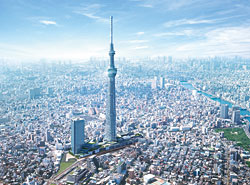 Image of the Tokyo Sky Tree® area
Image of the Tokyo Sky Tree® area
(provided by TOBU RAILWAY CO., LTD. and TOBU ENERGY MANAGEMENT CO., LTD.)
Owing to the enhanced performance of heat pumps, waste heat recovery-type heat pumps in high-temperature processes are beginning to be used as the heat source of hot water and steam in production processes.
Sony Energy Devices Corporation's Tochigi Office has replaced its conventional heavy oil-fired boilers with these waste heat recovery-type hot water heat pumps, which not only provide heat that is required in the production processes of products, but also supplies cold energy for use in air-conditioning systems within the plant. Introduction of the heat pumps is expected to reduce CO2 emission by approximately 56% and reduce energy costs by approximately 41% compared to levels before their introduction.
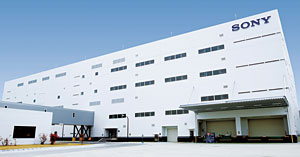
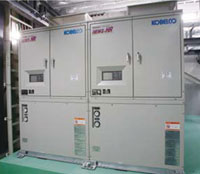 Heat pumps installed in Sony Energy Devices Corporation
Heat pumps installed in Sony Energy Devices Corporation
KAWASAKI STEAM NET CO., LTD., a member of the TEPCO Group, supplies the steam that has been used for power generation (approx. 300,000 t/year) at the TEPCO Kawasaki Thermal Power Station to 10 companies in the Kawasaki Chidori-Yako Industrial Complex via pipes that cover a total distance of approximately 6.5 km. This project eliminates the need for each company to individually produce steam using their own boilers, and is expected to reduce approximately 11,000 kR/year of fuel (crude oil equivalent) and approximately 25,000 t/year of CO2 emissions compared to the conventional system.
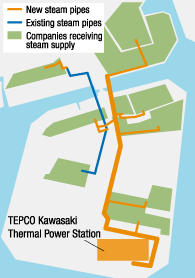 Overview of the steam supply business
Overview of the steam supply business
TEPCO works closely with product manufacturers to research and develop high-efficiency products that incorporate such innovative technologies as the heat pump and IH technologies. These technologies and products are applied to various sectors and applications, to contribute to creating a low-carbon society.
HEM-HR90 is the first hot water heat pump in the industry that simultaneously provides 90℃ hot water and 7℃ cold water. As it supplies hot water at temperatures higher than conventional heat pump units, it can be used in a wide range of applications, including heat sterilization of beverages. Using the HEM-HR90 can reduce CO2 emissions by approximately 70% compared to conventional systems.
Joint development with: Kobe Steel, Ltd.; Chubu Electric Power Co., Inc.; Kansai Electric Power Co., Inc.
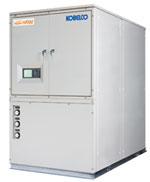 HEM-HR90
HEM-HR90
duoQ3 is the industry's first hybrid hot water heater which combines a heat pump water heater with a gas-fired combustion water heater in a single package. By packaging the two types of water heaters, the unit facilitates the designing and configuration of heating systems. It can also effectively control multiple applications according to their hot water use, and has the potential to reduce CO2 emissions by approximately 28% compared to a same-capacity system that uses a combustion-type hot water heater.
Joint development with: NIPPON THERMOENER CO., LTD
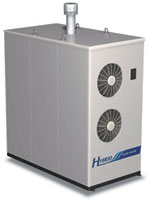 duoQ3
duoQ3
TEPCO operates experience-based facilities and communicates information on various events to promote the dissemination of electrification systems.
The electrified factory provides a solution to increasing productivity and environmental performance by utilizing the latest heat pump and IH technologies in plant production processes.
TEPCO supports the process innovation of plants by providing hands-on experience of its electric products at its exhibition facility called TEPCO Electrified Factory I2 (I-Square)", and brings companies together in new business opportunities and inspires the development of new products.

Electrified kitchen systems help realize sanitary and comfortable kitchen environments, because they produce little waste heat. They also contribute to saving energy and reducing CO2, because they provide high thermal efficiency and minimize energy loss.
TEPCO's "Switch! Station Pro. Ariake," a comprehensive hands-on facility for industrial electrified kitchen systems, proposes various designs for kitchen facilities in response to the needs of food service-related customers, from large-scale cooking facilities in schools and hospitals to restaurant businesses.
More than 10,000 visitors have experienced the industrial electrified kitchen at Switch! Station Pro. Ariake, as of February 2010.

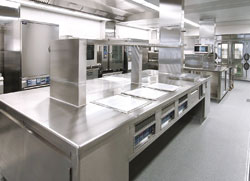
Industrial electrified kitchen
To promote CO2 emissions reduction in Japan, related laws and ordinances are placing stronger regulations on the use of energies by businesses, and other such measures are also requiring companies to step up their energy-saving and CO2 reduction efforts.
At TEPCO, we established high reduction targets for energy and resources (electricity, noncommercial water, gasoline, copy and printer paper) that are consumed in our offices, and have consistently worked toward attaining these targets since FY2001. As a result, we succeeded in reducing these consumptions by 15 to 39% in FY2005, compared to FY2000 levels. During the 5 years from FY2010 to FY2014, we will take our initiatives further and aim to reduce TEPCO's total energy consumption intensity (MJ/m2) in our offices by 5% compared to FY2009, by improving operations, such as through proper management of air conditioner temperature settings and tuning, and making facility improvements, such as upgrading air conditioners, water heaters and lighting fixtures to higher efficiency products. Moreover, we hope to contribute to saving energy and reducing CO2 throughout society by amassing energy-saving technologies and knowledge through our CO2 reduction initiatives and using them to propose optimum energy solutions to our customers.
© Tokyo Electric Power Company Holdings, Inc.